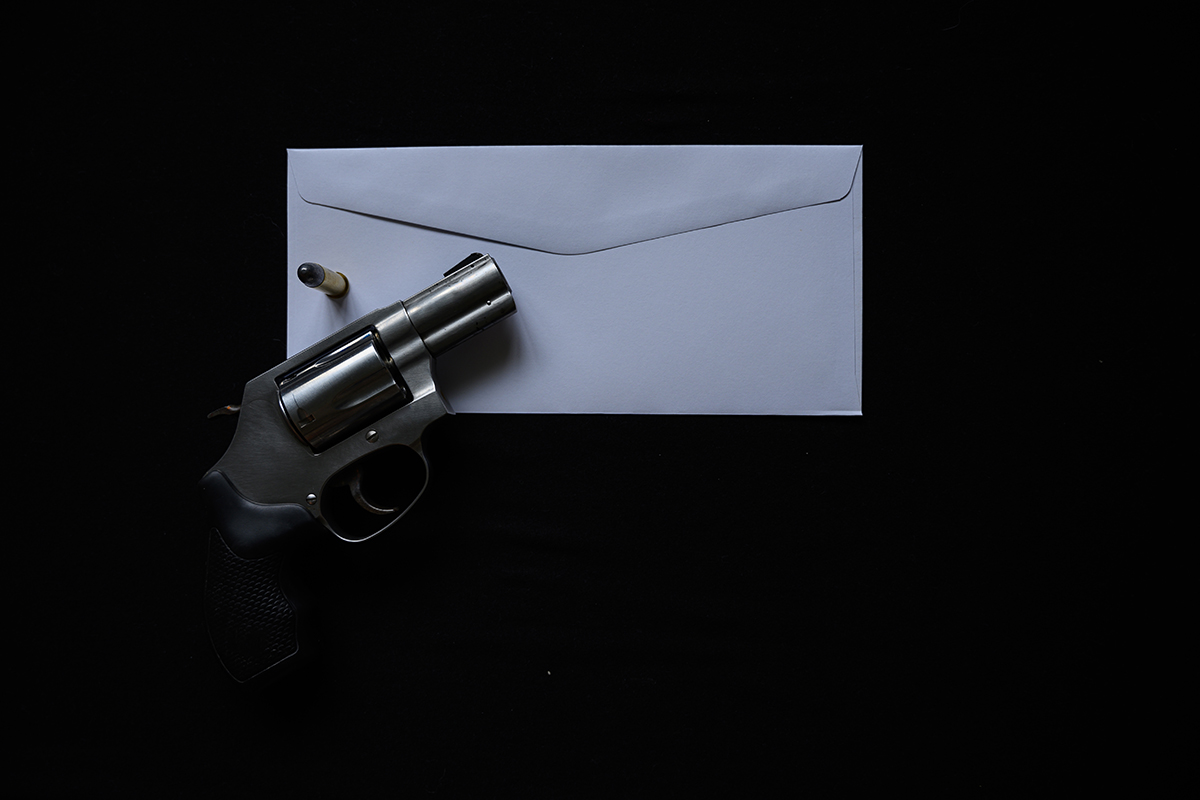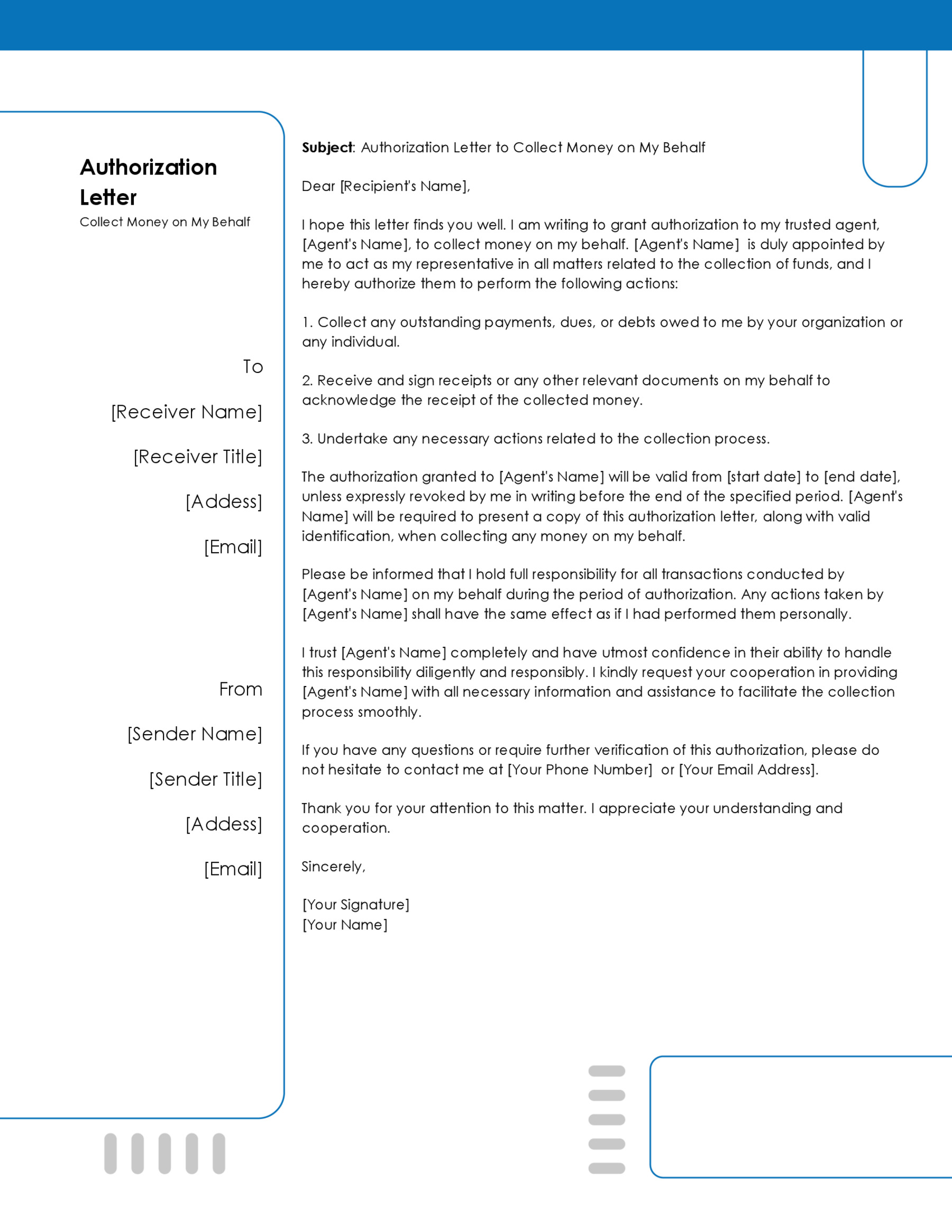You screwed up. Is there a nicer way to say this? Maybe. Are there meaner ways to say this? Most definitely. But the fact of the matter is You. Screwed. Up. Now you have to do the adult thing and take responsibility for your actions, and apologize. Many people prefer a face-to-face apology. However, sometimes this can’t be done. Maybe you are afraid you’ll fluster your words, perhaps say something in anger and just make the situation worse. Maybe this was such a colossal screw up it affected a large number of people. Maybe the person you offended was so offended they relocated to get away from you. An apology letter might not fix everything, but it is a start in the right direction.
This could be a physical document, i.e., a piece of paper with writing, or an e-mail. Either way, it acknowledges the mistake, expresses regret, and respectfully asks for forgiveness or at least patience. Ideally, it would also express an attempt to make restitution if possible. It is important in a workplace environment because it is physical proof that you own their mistakes and try to make up for them.
Free Templates
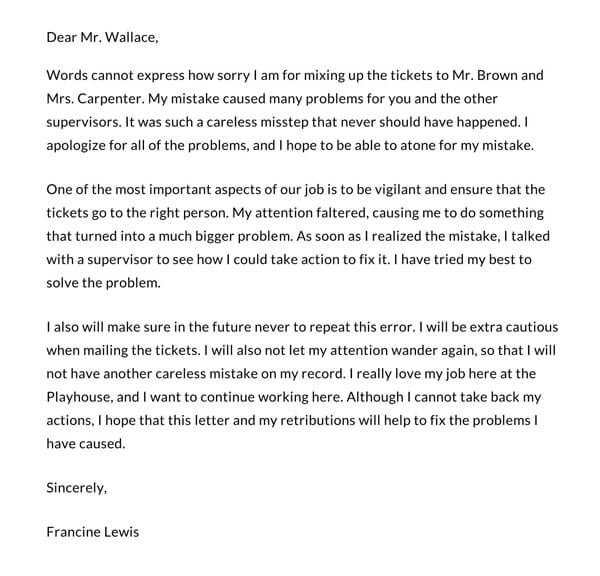
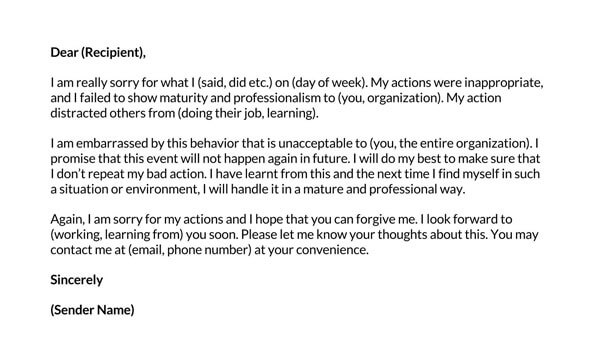
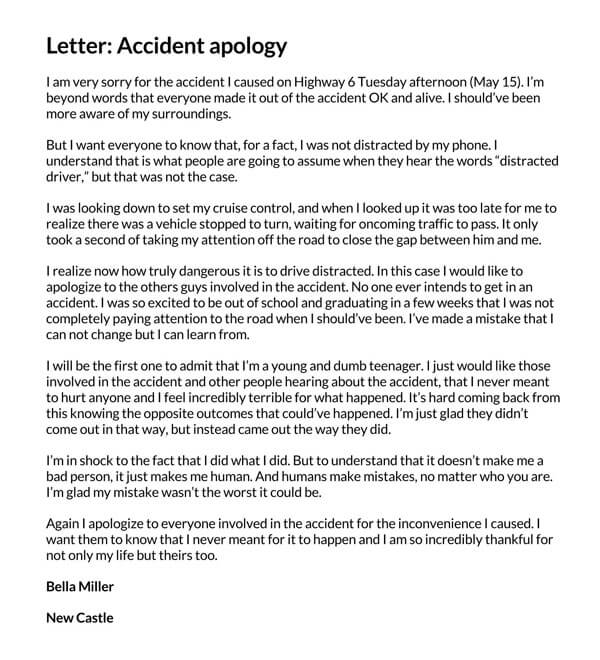
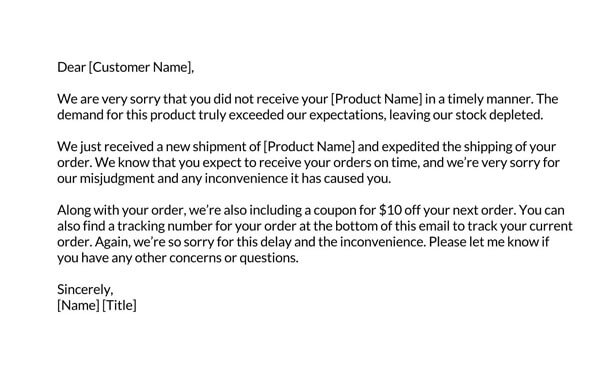
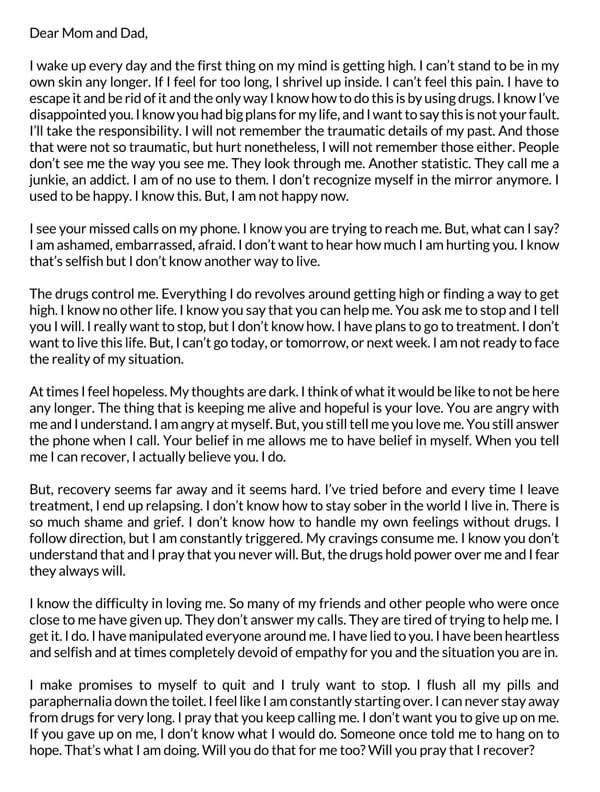
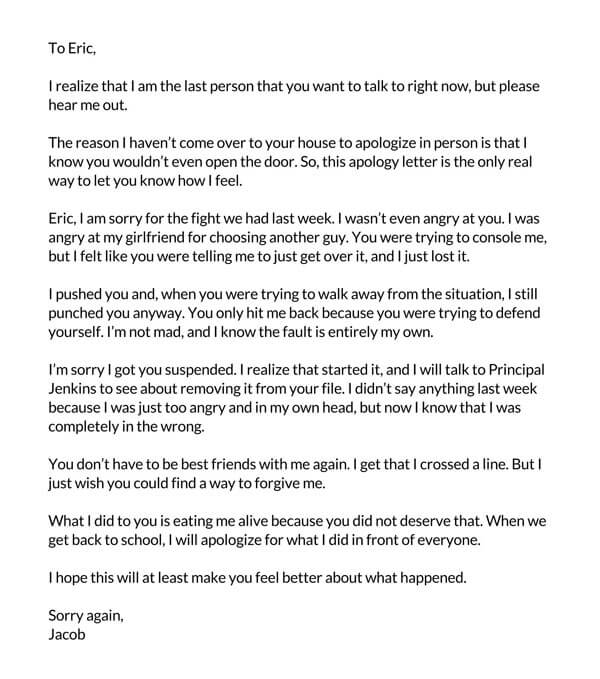
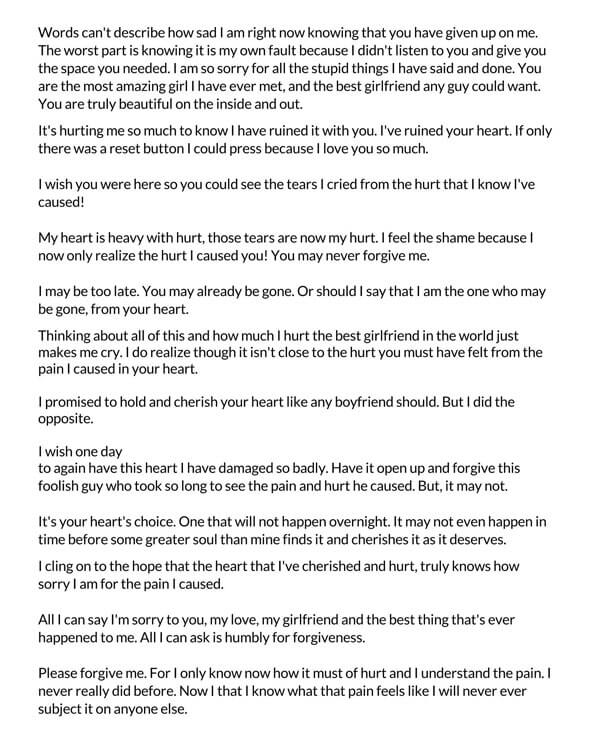
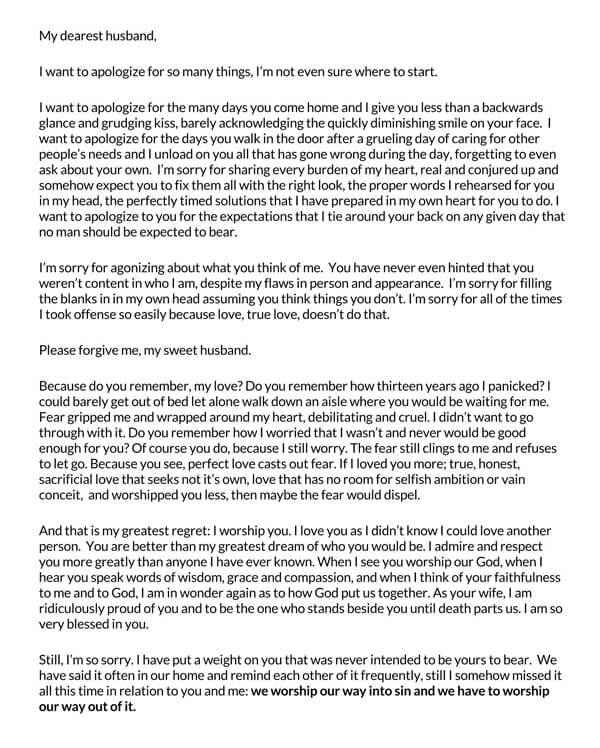
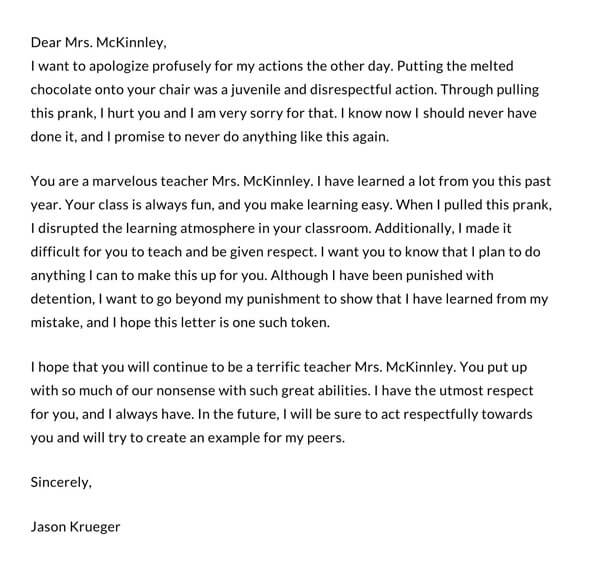
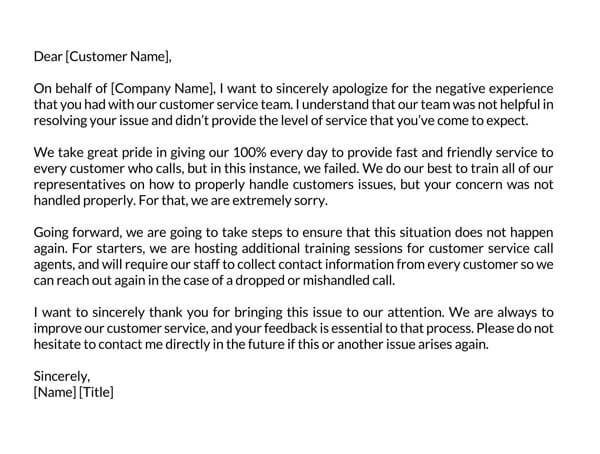
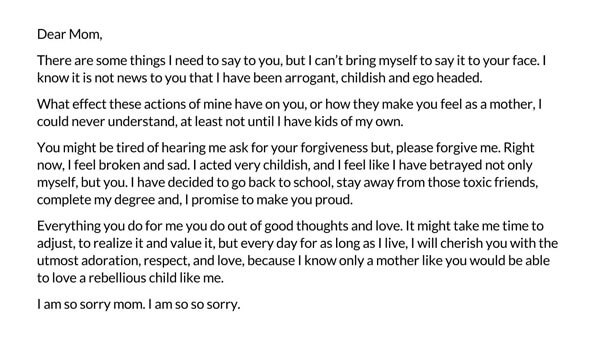
Why is it Difficult to Write?
You might think that admitting a mistake makes you a bad person. It’s a lack of empathy that makes someone a bad person. If you can empathize with someone you’ve hurt without getting defensive, you show them that one mistake does not reflect who you are as a person. While apologizing can lead to more accusations, not apologizing can lead to resentment. You can’t control how someone feels, but you can at least try for what would be less toxic on the whole.
How to Start It
Following are the steps for starting the letter:
Acknowledge your mistake
Right off the bat, accept responsibility for what you did. Point out what you did and why it made them upset. Be sincere and humble while showing empathy.
EXAMPLE
“Dear Father Sullivan, I was the one who emailed you erotic fan fiction instead of the annual financial report for the orphanage. I recognize that this caused you embarrassment as well as inconvenience.”
Apologize sincerely
You need to say the words “I am sorry.” Express regret for the consequences. Don’t shift blame or give excuses.
EXAMPLE
“I am truly sorry for not paying more attention to what I attached to my e-mail. I feel terrible that you were exposed to graphic descriptions of furry bondage when you were counting on me to supply the figures needed to plan next year’s budget.”
Describe what happened
You can explain, but not an excuse. Still acknowledge there was a mistake, and you intend to right it. This shows that you will back up your words with actions.
EXAMPLE
“I should not keep my work documents and my online hobby documents in the same file on my computer. I will keep them in separate files from now on. Please find the appropriate documentation attached to this message.”
Admit you were wrong
Humbly admit that this was your failure. You may politely request forgiveness on the understanding that you are owed nothing. Realize that the matter is not resolved until your relationship with the receiver is amended.
EXAMPLE
“The mistake was mine entirely. I should be more attentive.”
How to End it
Below are the guidelines on how to end the letter:
Propose something that can fix the problem you caused or at least appease the injured party. This may require some thought.
EXAMPLE
“I will be more attentive in the future. I am planning on getting a work computer so I can keep it separate from my ventures. For now, I apologize to you and anyone else I may have hurt.”
Ask for forgiveness
Make this a polite request. The injured party is under no obligation to forgive, but it’s nice to be asked.
EXAMPLE
“I humbly ask your forgiveness, Father. I understand fully how you were upset by this matter, but I hope we can still work together in the future.”
Deliver the letter
If you are on equal terms, you can send an email to the person. If the person is your superior, you may have to print it out and deliver it in person. In romantic relationships, you are equals, but handwritten letters are more meaningful.
Letter Template
[Your Name]
[Your Address]
[City, State, Zip Code]
[Email Address]
[Phone Number]
[Date]
[Recipient’s Name]
[Recipient’s Address]
[City, State, Zip Code]
Dear [Recipient’s Name],
I am writing this letter to sincerely apologize for [briefly describe the action or situation for which you are apologizing]. After taking some time to reflect on my actions and their impact, I understand now how my [actions/decisions/words] may have caused you [describe the type of harm, inconvenience, or feelings, e.g., distress, inconvenience, hurt feelings].
I want you to know that it was never my intention to [intended impact, e.g., cause you any harm, create a misunderstanding, etc.]. However, I recognize that intentions cannot undo the effects of my actions, and for that, I am truly sorry. I take full responsibility for [what you did or failed to do] and the subsequent repercussions it has had on you [and/or the situation/project/relationship].
In an effort to make amends, I [describe any steps you have taken or plan to take to rectify the situation or ensure it doesn’t happen again]. I understand that this may not immediately rectify the situation, but I hope it serves as a starting point to [repair our relationship/mend the trust between us/correct the mistake].
I deeply value our [relationship/association/friendship] and am committed to [any actions you plan to take to improve or repair the relationship, or behaviors you plan to change]. I am hopeful that over time, and with my continued effort, we can move past this incident and rebuild the trust that was lost.
Please let me know if there is anything specific you would like me to do or any further steps you believe I should take to make amends. I am open to your suggestions and willing to listen to how you feel and what you think would be appropriate under these circumstances.
Once again, I am truly sorry for my actions and for any pain or inconvenience I have caused. Thank you for taking the time to read this letter and for considering my apology. I look forward to the opportunity to discuss this matter with you further, should you be willing.
Sincerely,
[Your Signature (if sending a hard copy)]
[Your Typed Name]
Sample Apology Letter
Dear Ms. Green,
I am writing to express my sincerest apologies for not meeting the deadline for the Phoenix Project on March 1, 2024. After reflecting on the situation, I realize the gravity of my oversight and the disruption it has caused to the project timeline and to the team relying on my contribution.
It was never my intention to hinder the progress of our project or to place additional burdens on my colleagues. I understand that by missing the deadline, I compromised our team’s reputation for reliability and affected our client’s confidence in our ability to deliver on our promises.
I take full responsibility for my failure to manage my workload effectively and for not communicating my struggles earlier, which might have allowed us to find a solution together. To rectify this situation, I have completed the outstanding tasks and submitted them to you for review. Additionally, I am implementing a more rigorous time management and project tracking system to ensure this oversight does not occur again.
I value the trust you and the team place in me and am committed to restoring that trust. I am determined to learn from this mistake and to demonstrate my dedication to our team’s success through my actions and improved performance.
Please let me know if there are any further steps you believe I should take to make amends for this oversight. I am willing to put in the extra hours or take on additional tasks to help mitigate the impact of my delay on the project.
Once again, I am truly sorry for any inconvenience and frustration I have caused. Thank you for considering my apology, and I hope to have the opportunity to discuss this matter with you further.
Sincerely,
Alex Johnson
Key Takeaways
This apology letter is effective for several reasons:
Acknowledgment of Mistake: The writer clearly acknowledges their mistake in missing the deadline, understanding the gravity of their oversight. This admission is crucial in any apology as it demonstrates accountability.
Understanding of Consequences: The letter conveys a deep understanding of the impact of the missed deadline on the project, team, and client confidence. Recognizing the broader implications of one’s actions on others is key to showing genuine remorse.
Taking Responsibility: The writer takes full responsibility for their actions without making excuses. This accountability is essential for rebuilding trust.
Corrective Actions: The letter outlines specific steps the writer has taken to correct the mistake, such as completing the outstanding tasks and implementing a new system for managing workload and deadlines. Offering solutions to rectify the situation shows a proactive approach to resolving the issue.
Commitment to Improvement: Expressing a commitment to not repeat the mistake and to learn from it is critical in an apology letter. It reassures the recipient that the writer is serious about making positive changes.
Openness to Further Suggestions: The writer invites feedback on additional steps they can take to make amends, demonstrating openness to learning and further improvement.
Polite and Respectful Tone: The tone is respectful and sincere, which is crucial in conveying the genuineness of the apology and in maintaining professionalism.
Overall, the letter effectively communicates remorse, responsibility, and a readiness to rectify the situation, making it a strong example of how to apologize professionally.
Types of Letters
The following are different types:
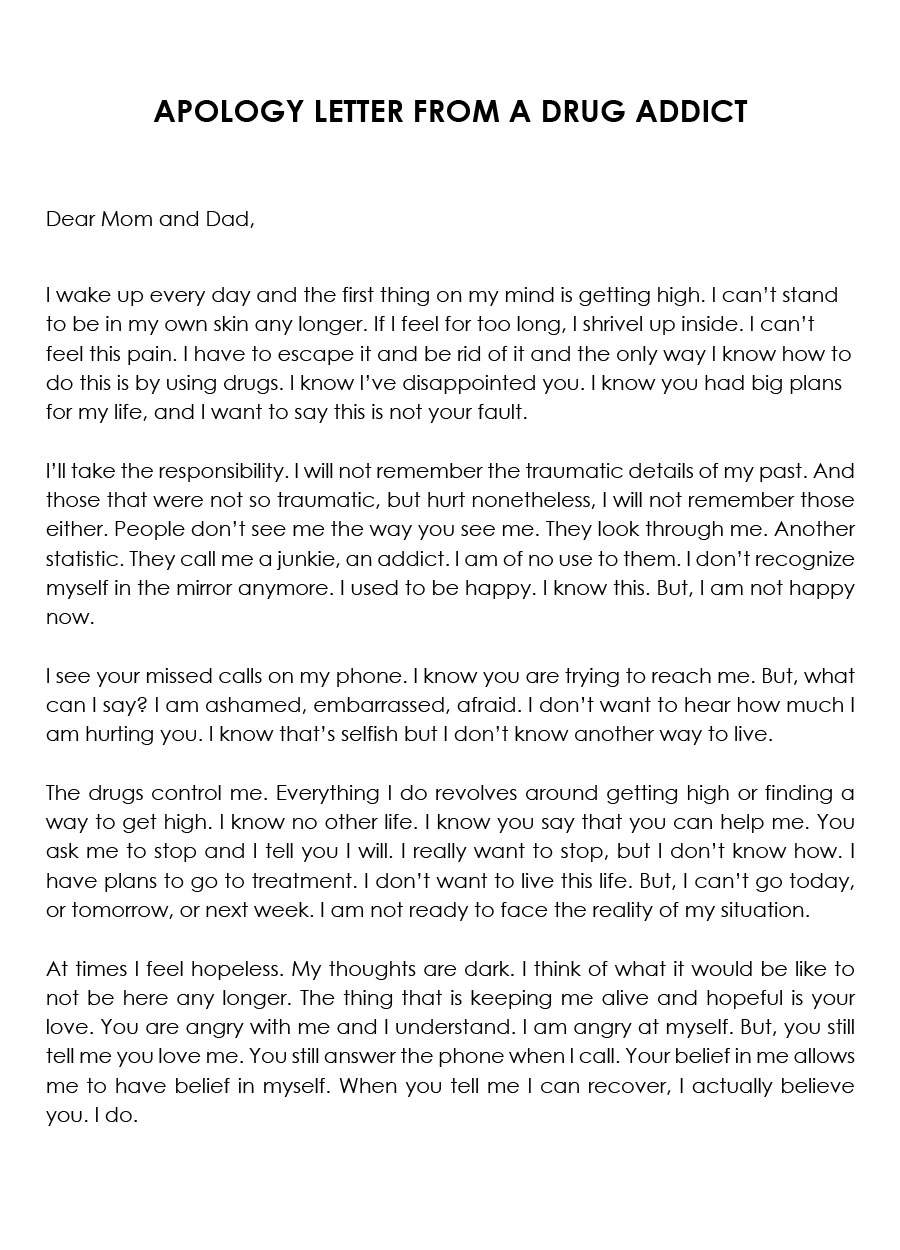
Drug Addict Apology Letter Example
Download: Microsoft Word (.docx)
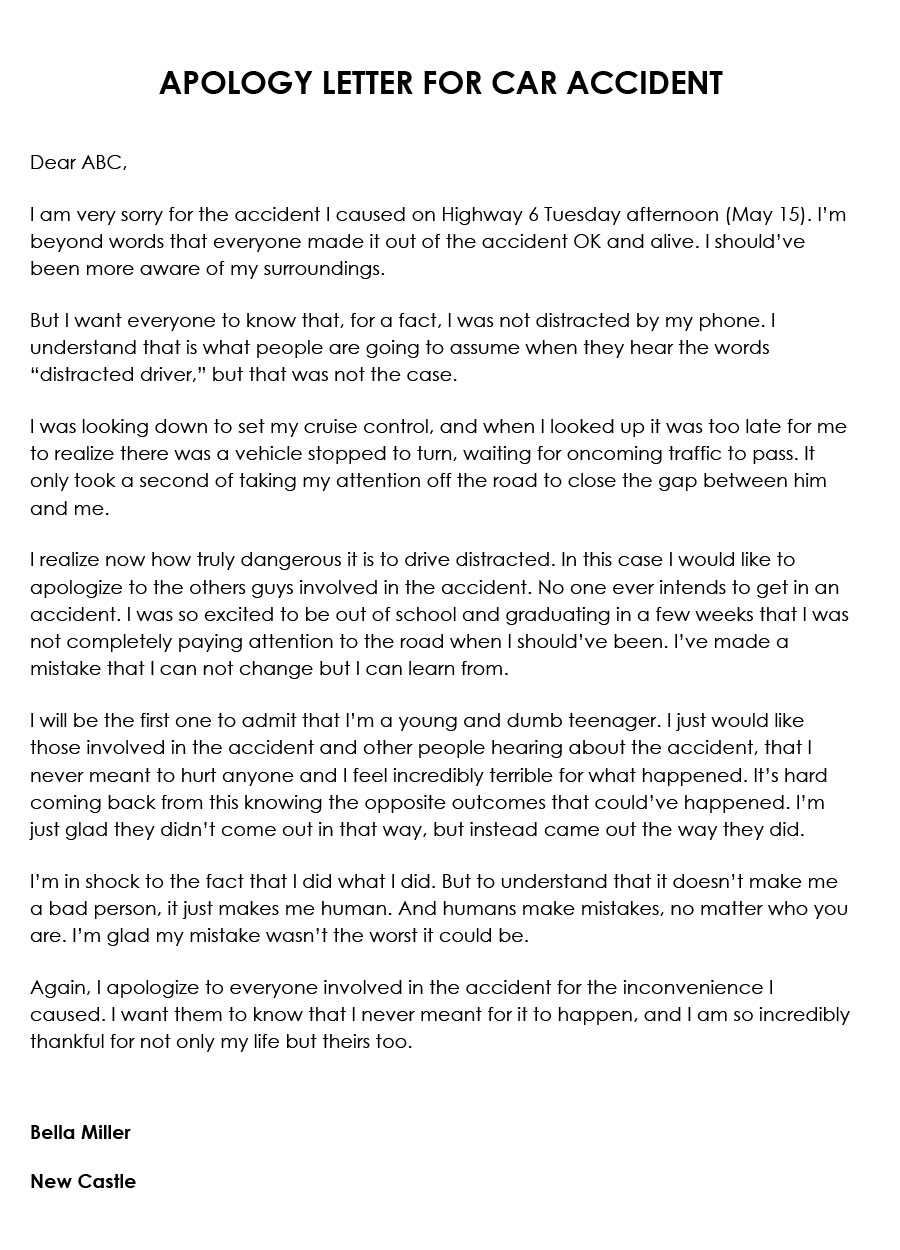
Car Accident Apology Letter Example
Download: Microsoft Word (.docx)
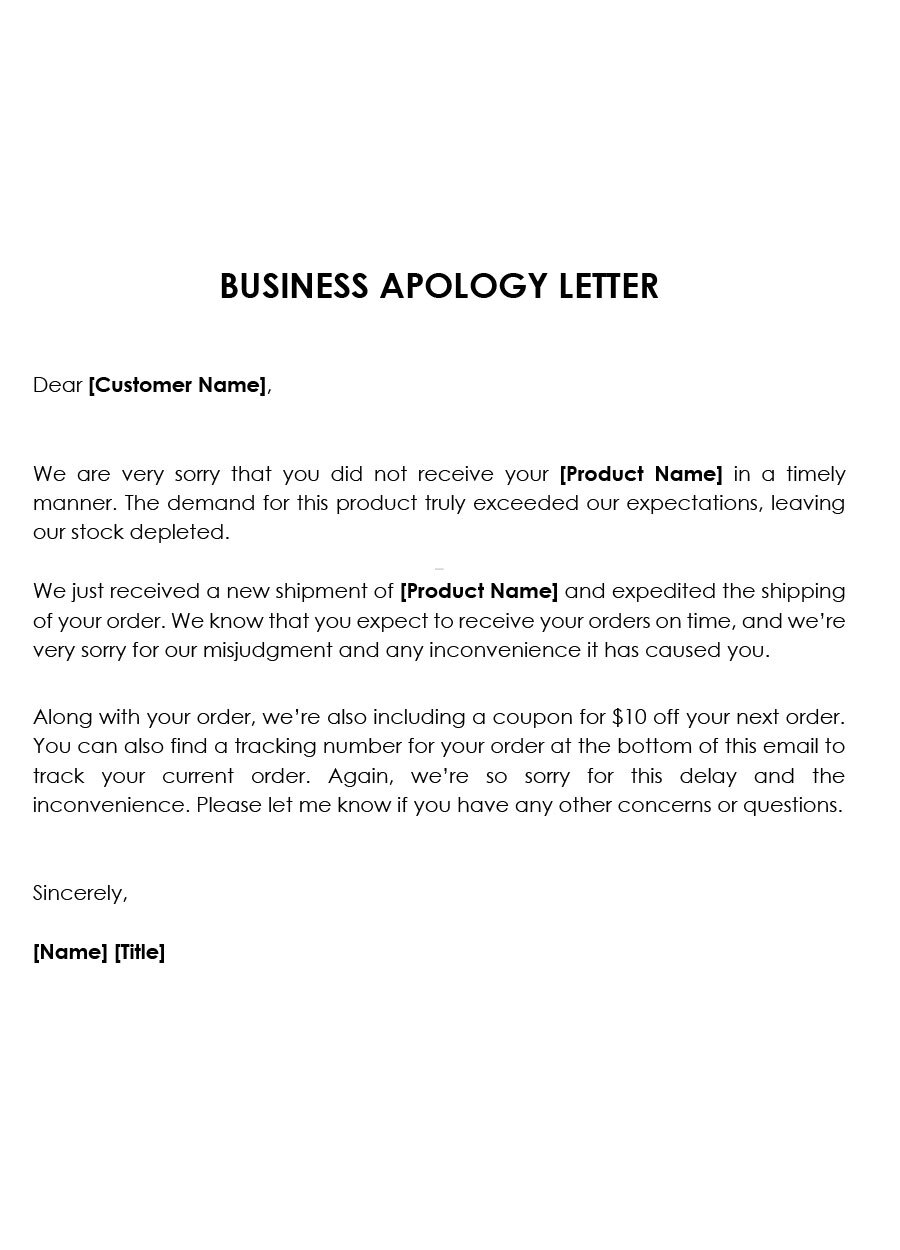
Business Apology Letter Example
Download: Microsoft Word (.docx)
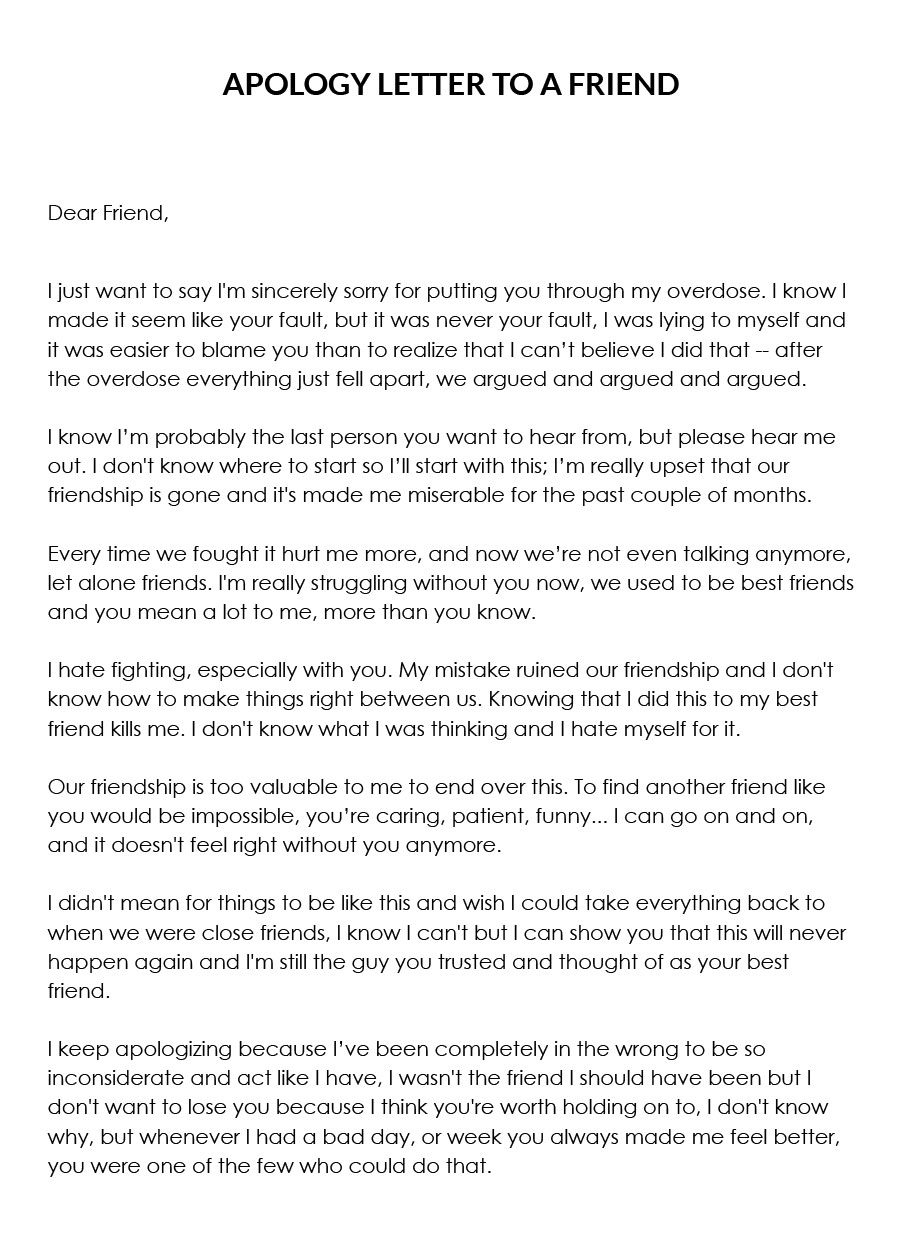
Friend Apology Letter Example
Download: Microsoft Word (.docx)
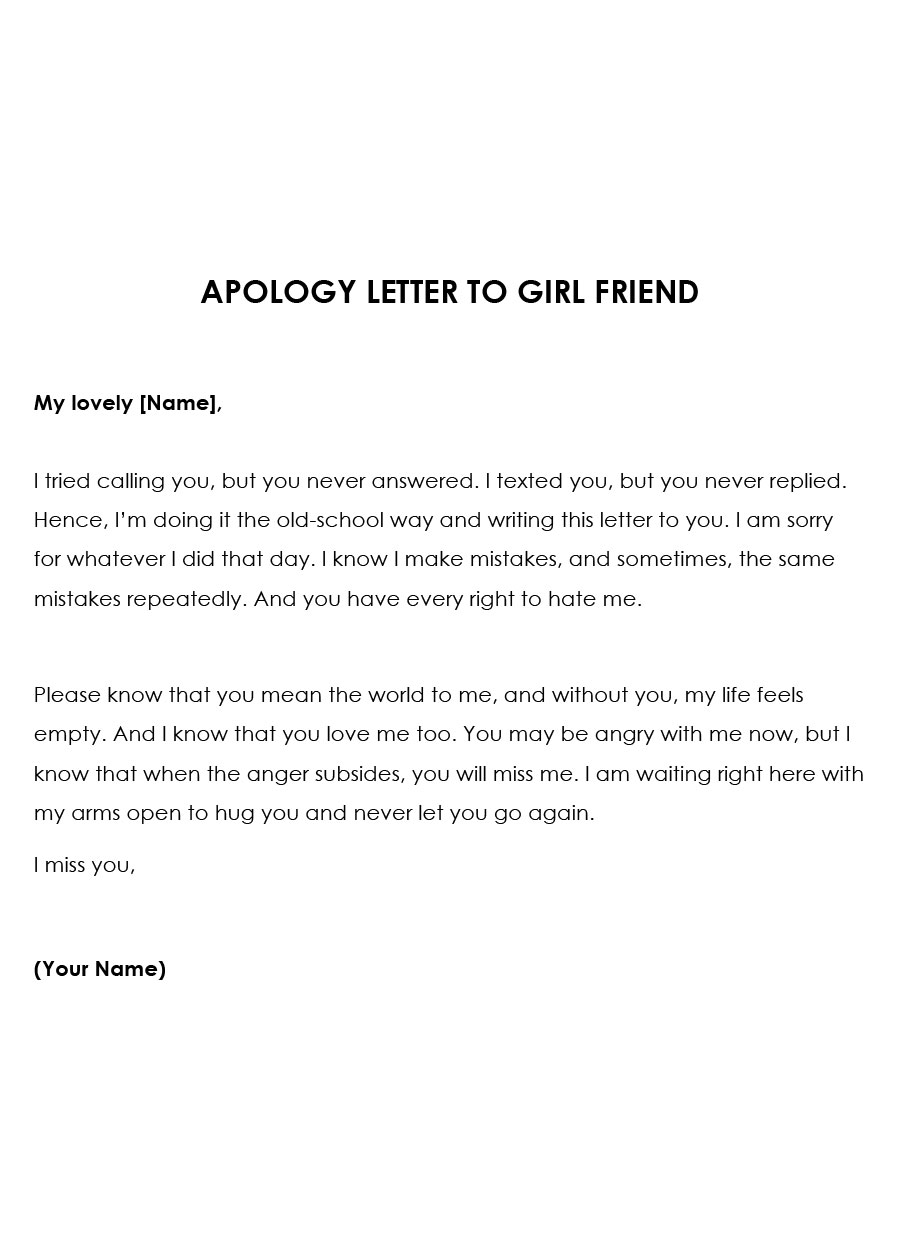
Spouse Apology Letter Example
Download: Microsoft Word (.docx)
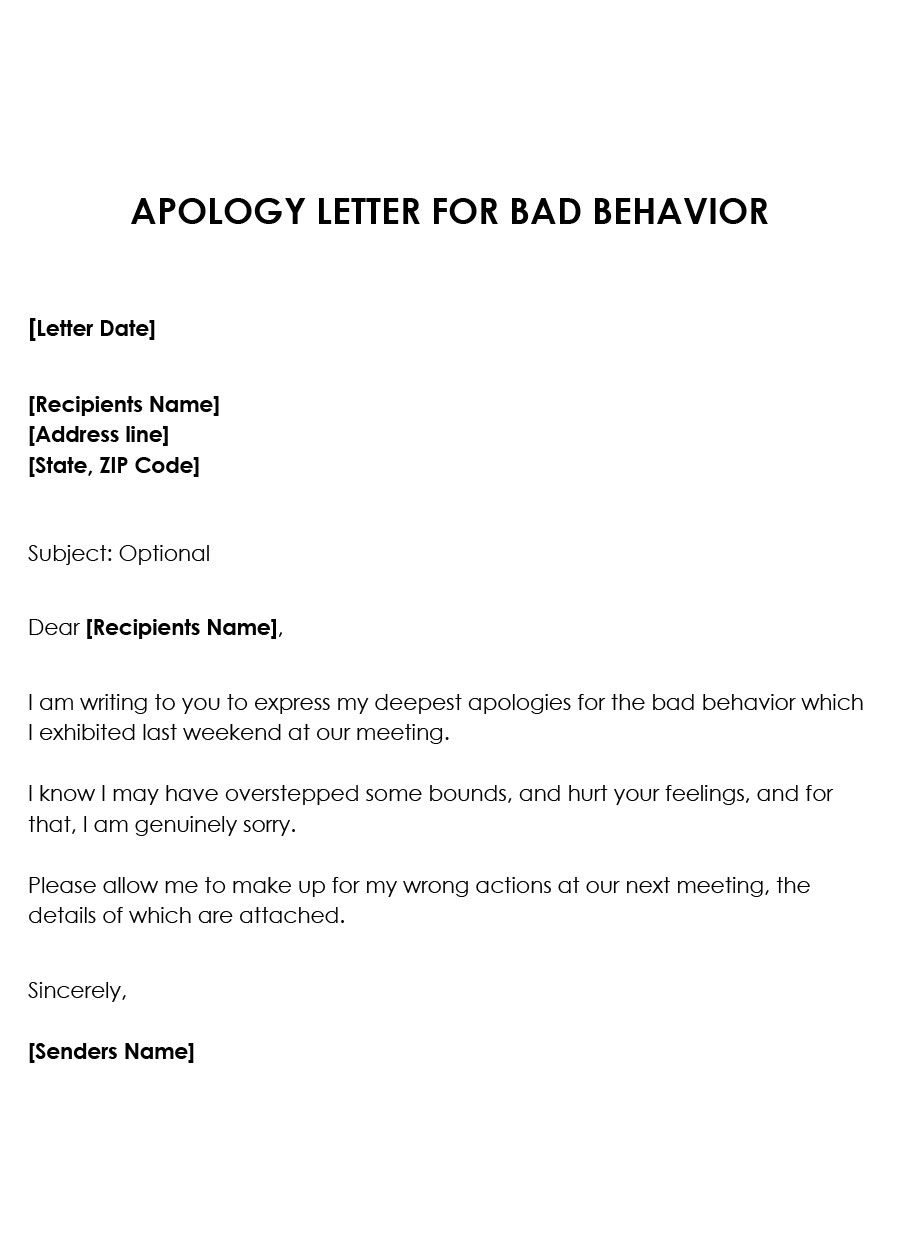
Bad Behavior Apology Letter Example
Download: Microsoft Word (.docx)
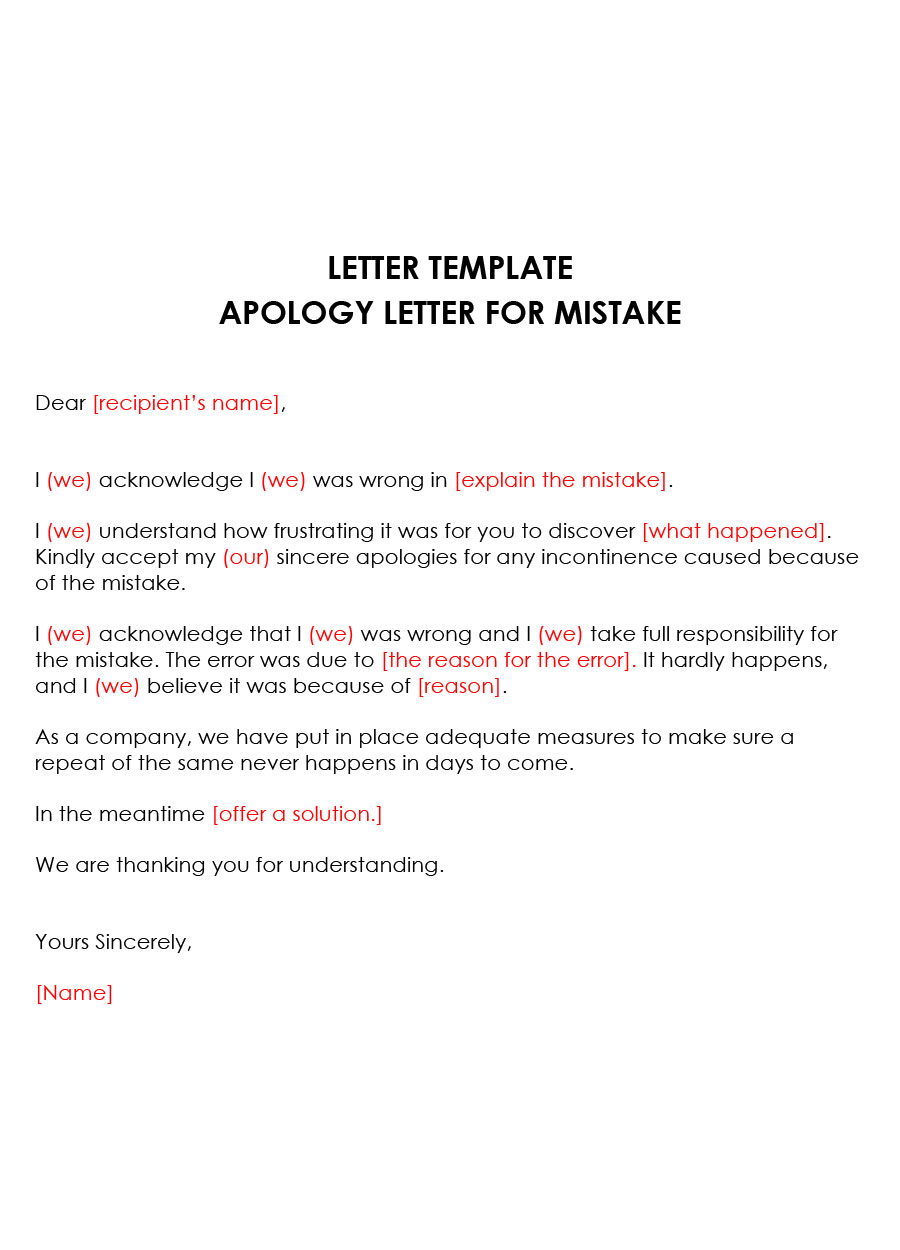
Mistaken Cause Apology Letter Example
Download: Microsoft Word (.docx)
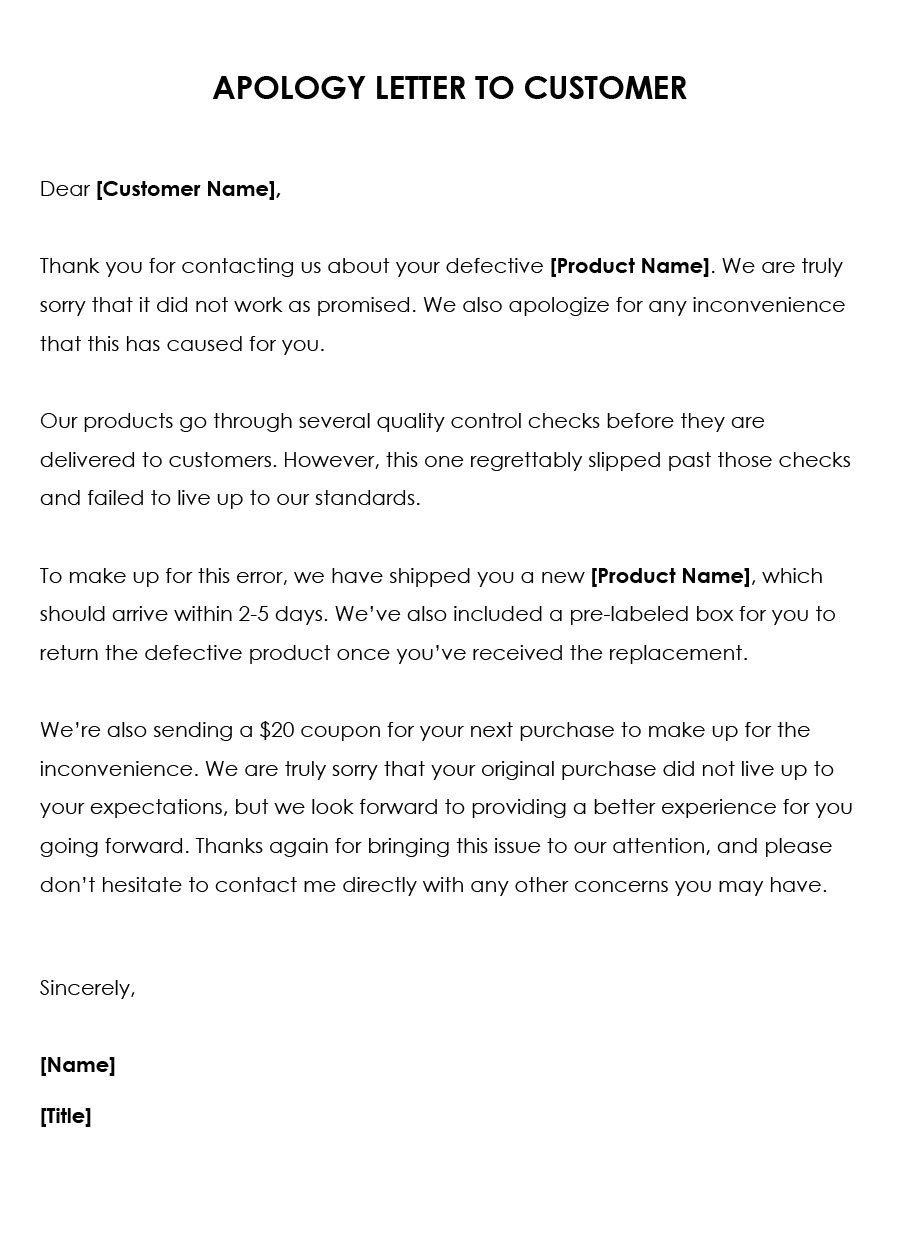
Customer Apology Letter Example
Download: Microsoft Word (.docx)
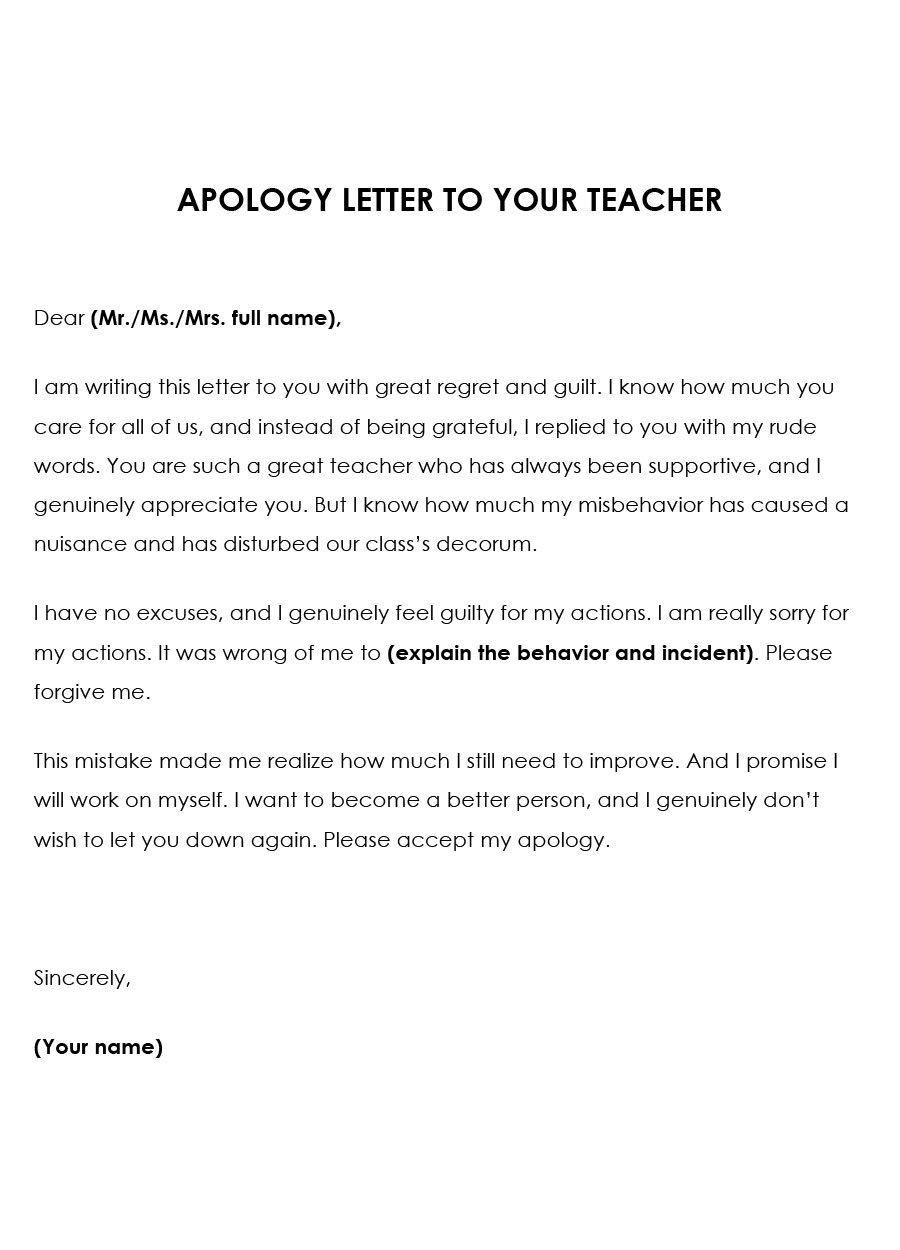
Student Apology Letter Example
Download: Microsoft Word (.docx)
Tips for Writing
Following are some tips for writing the letter:
- Be sincere: It needs to be honest. No backhanded “I’m sorry you feel that way”. If you don’t honestly feel sorry, don’t bother.
- Be concise: The recipient may be owed a short explanation, but keep it short. They don’t need to wade through War and Peace when “I’m sorry” is enough.
- Be selfless: This is all on you. Don’t blame the recipient at all. Even if much of the fault was in someone else, accept your fault in trusting them.
Conclusion
A well-written letter can clear the air and make it known that this was but an aberration of who you truly are. It expresses that you accept your fallibility and wish to make amends to anyone you’ve hurt. Apologies are never easy, but they are often necessary. It means taking responsibility for what you’ve done and facing the consequences of your actions. It can be unpleasant, but it is part of being a civilized adult.

